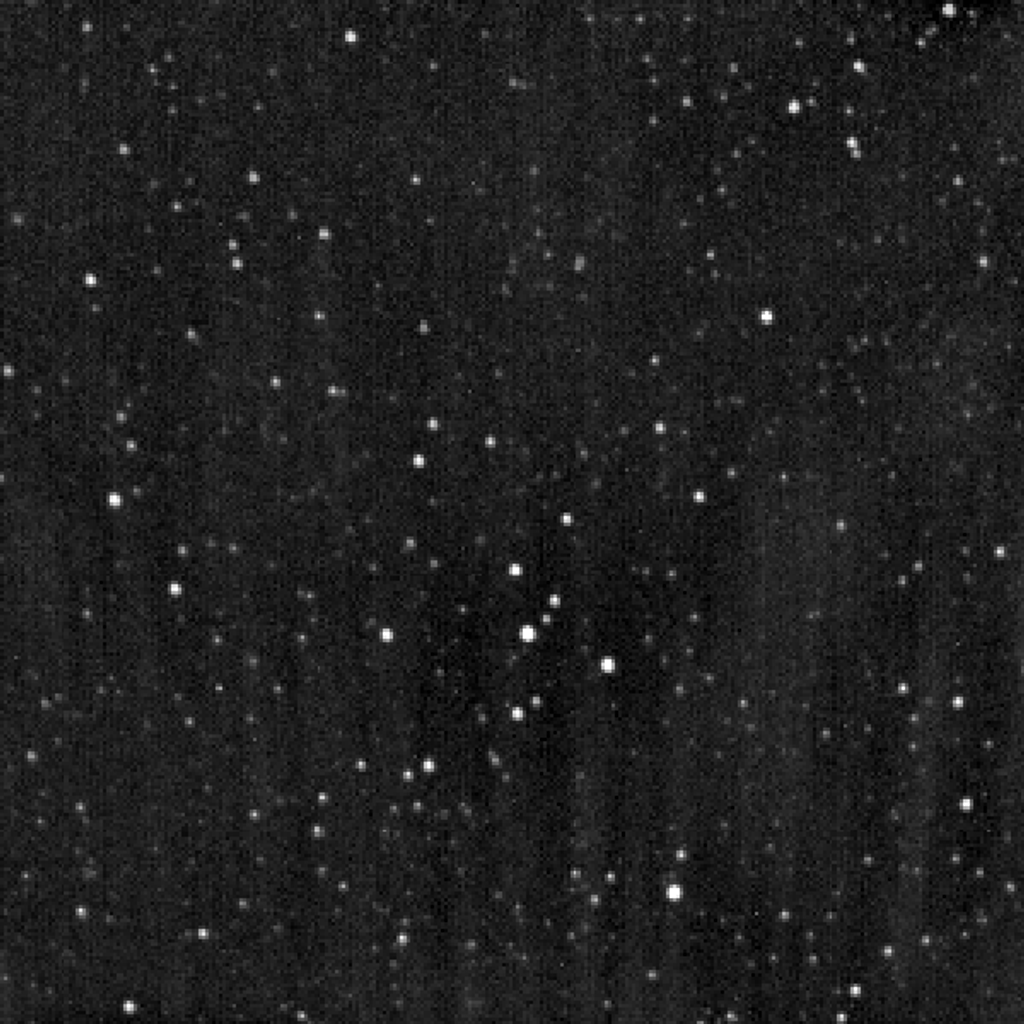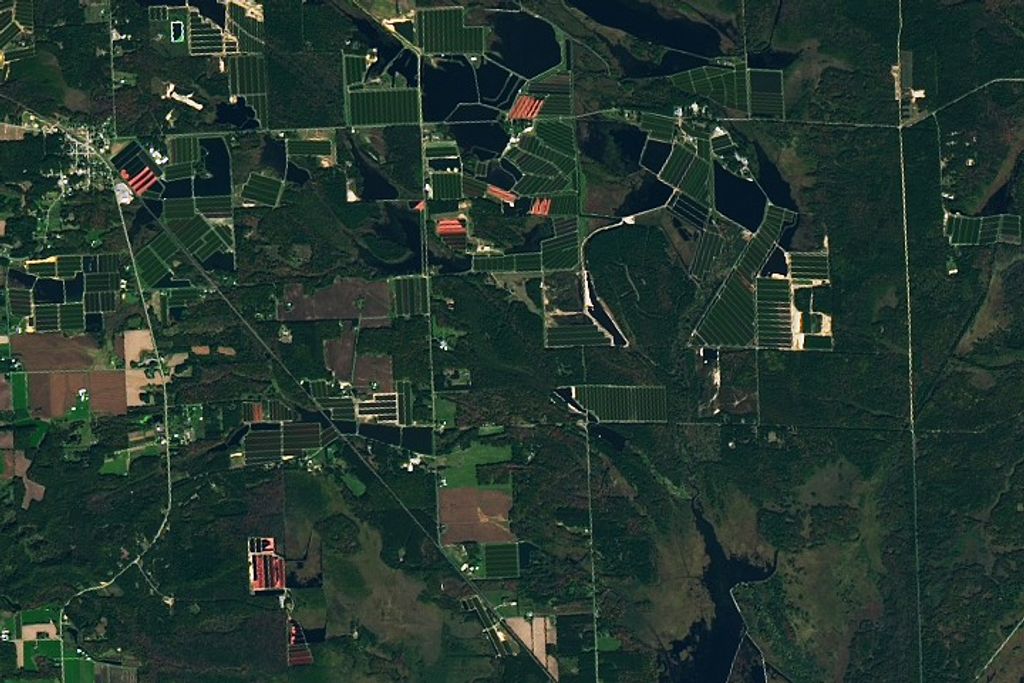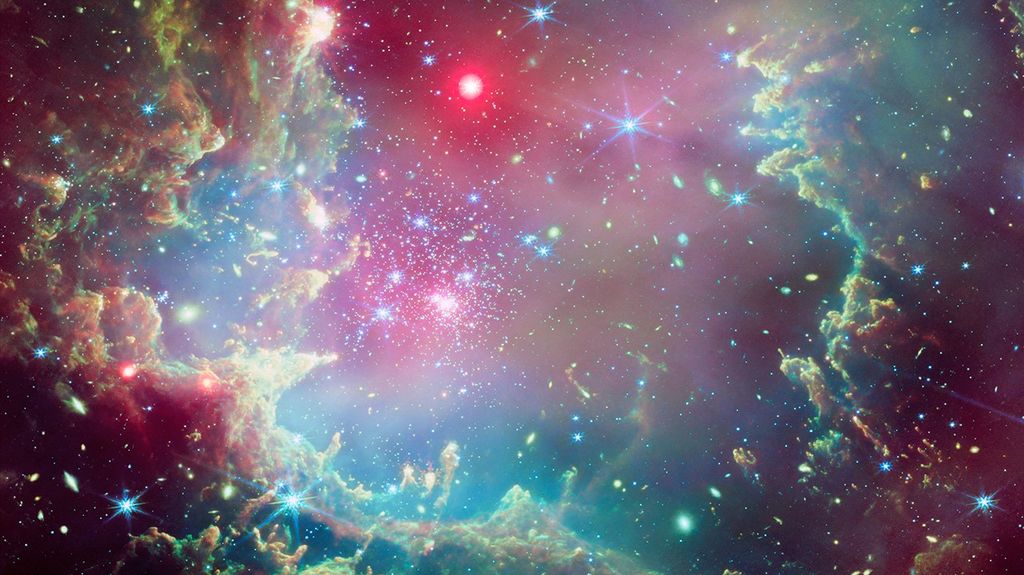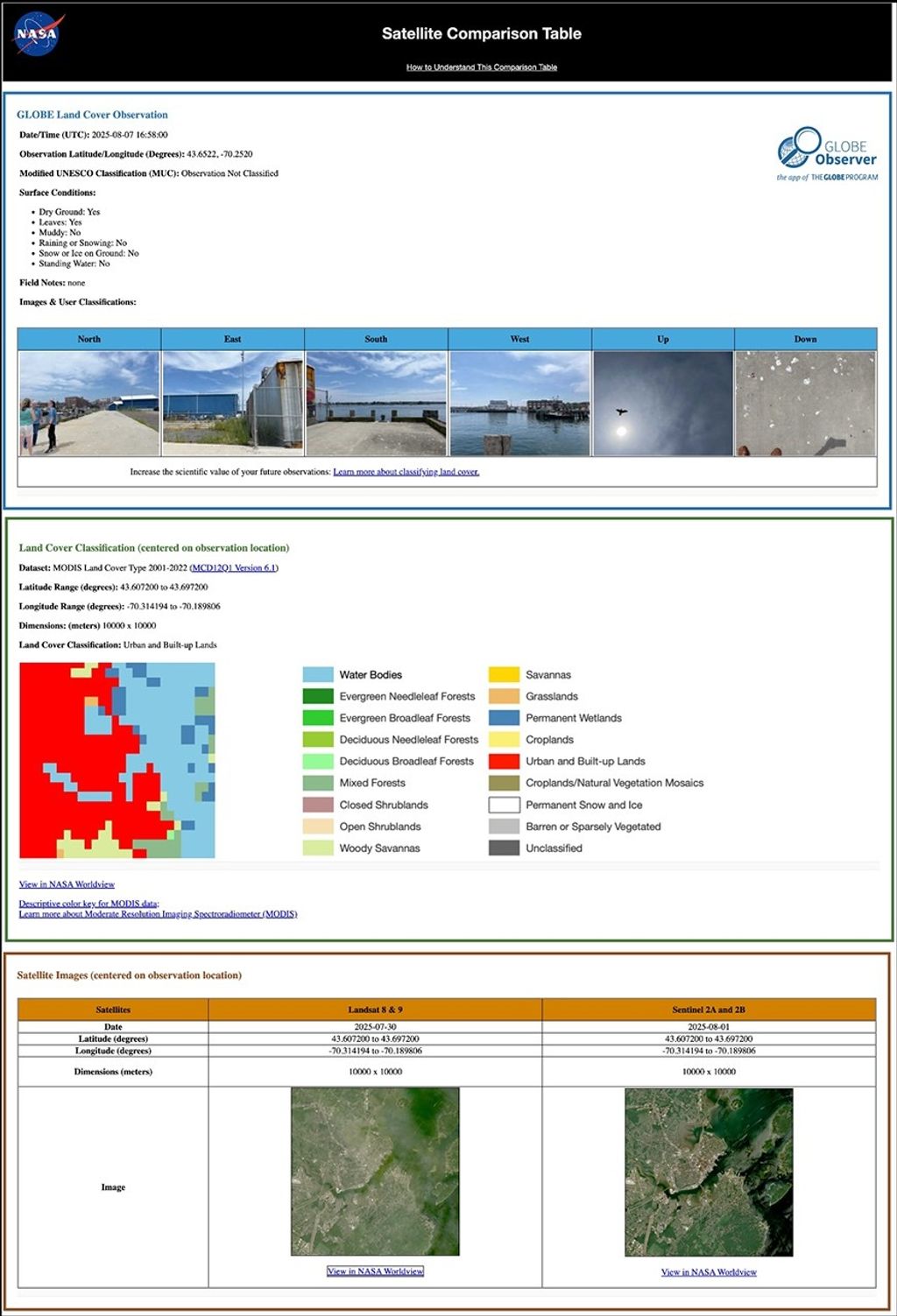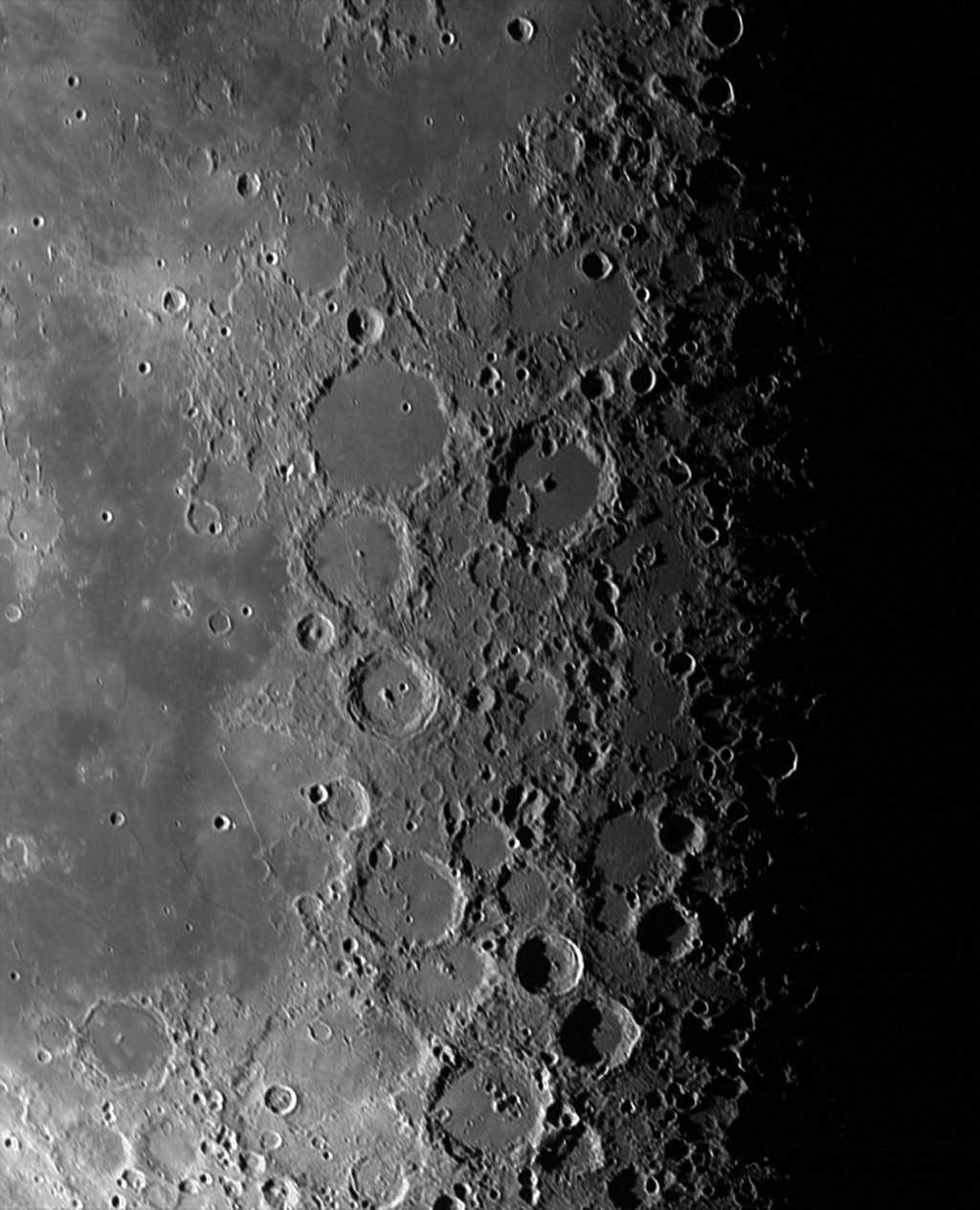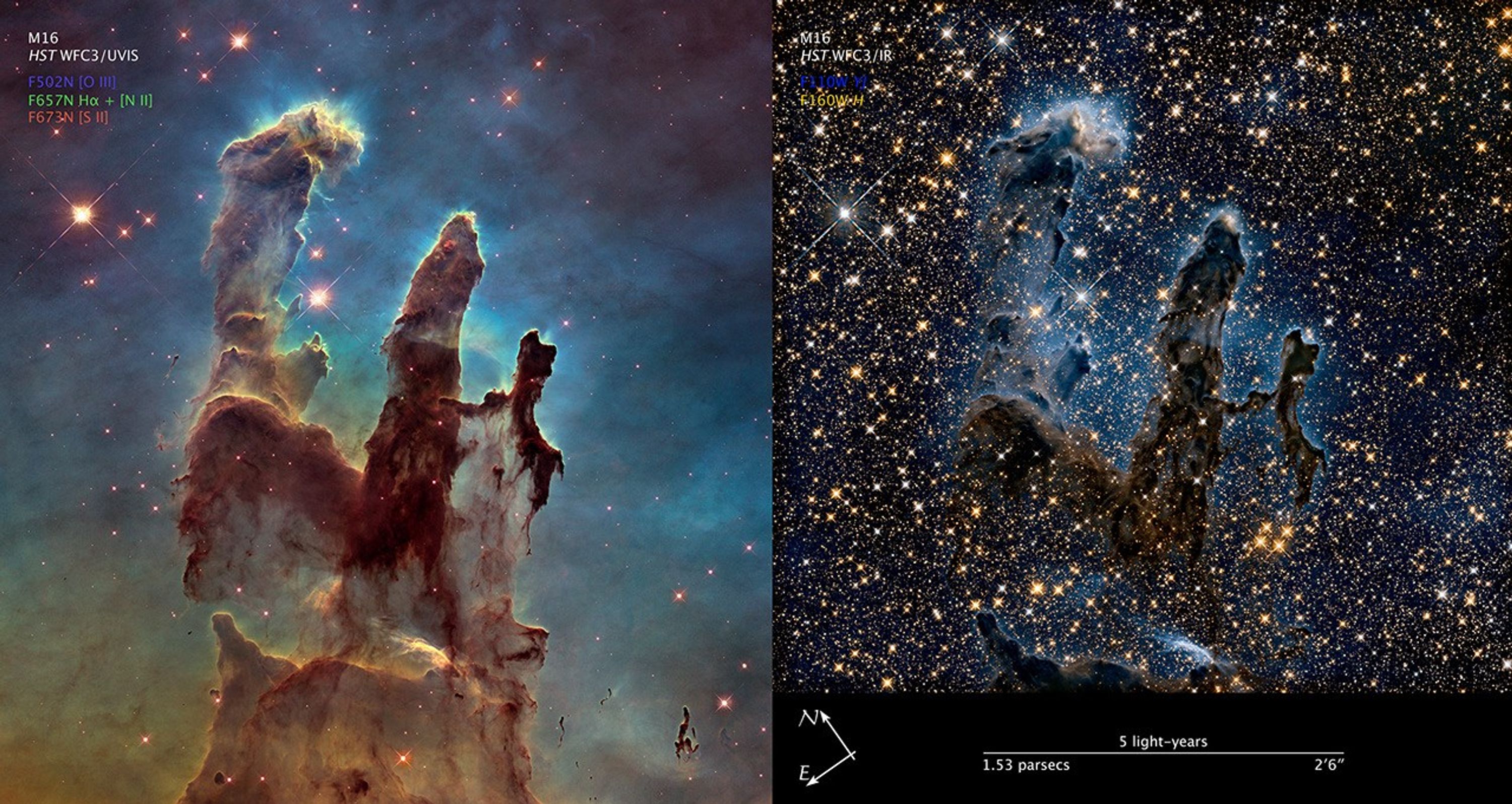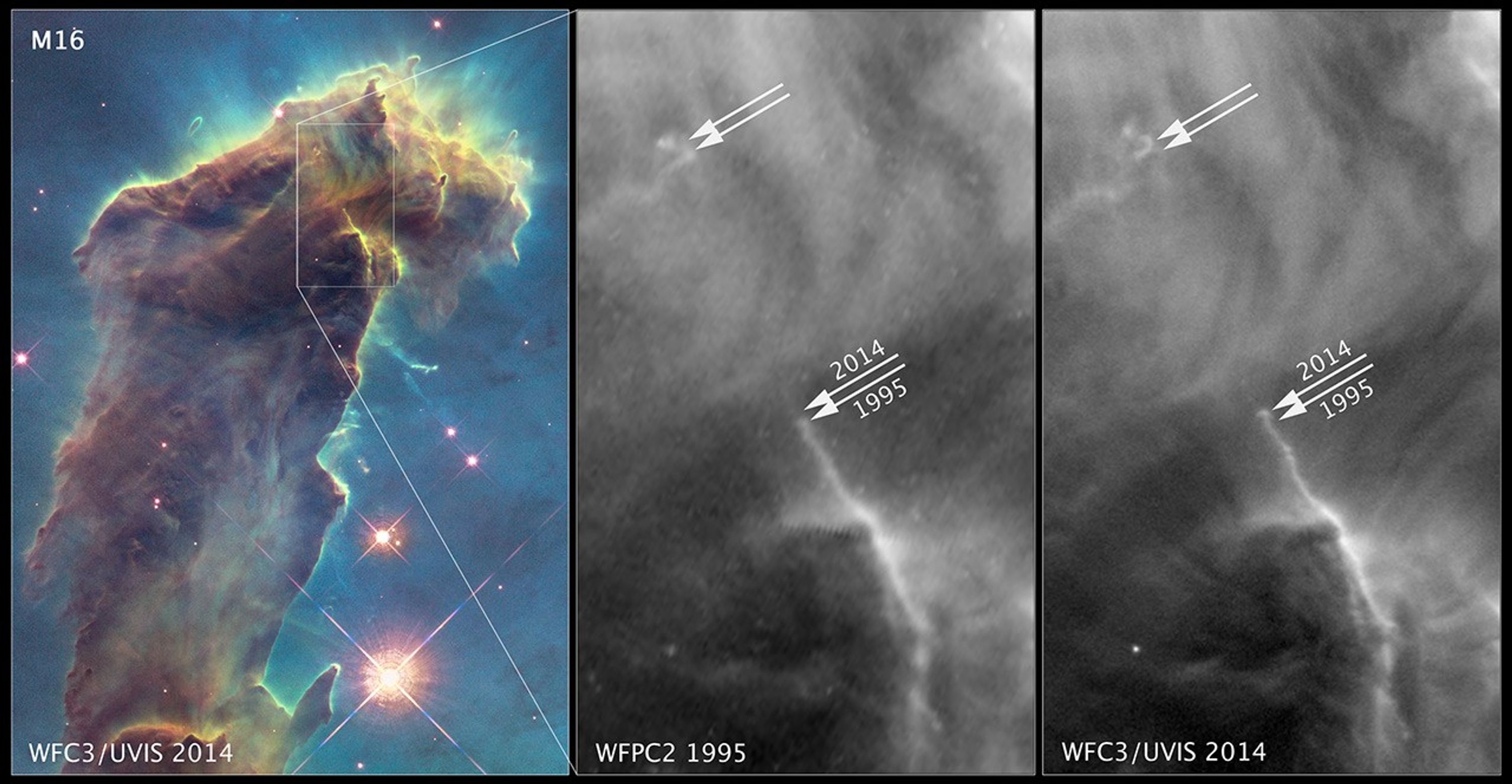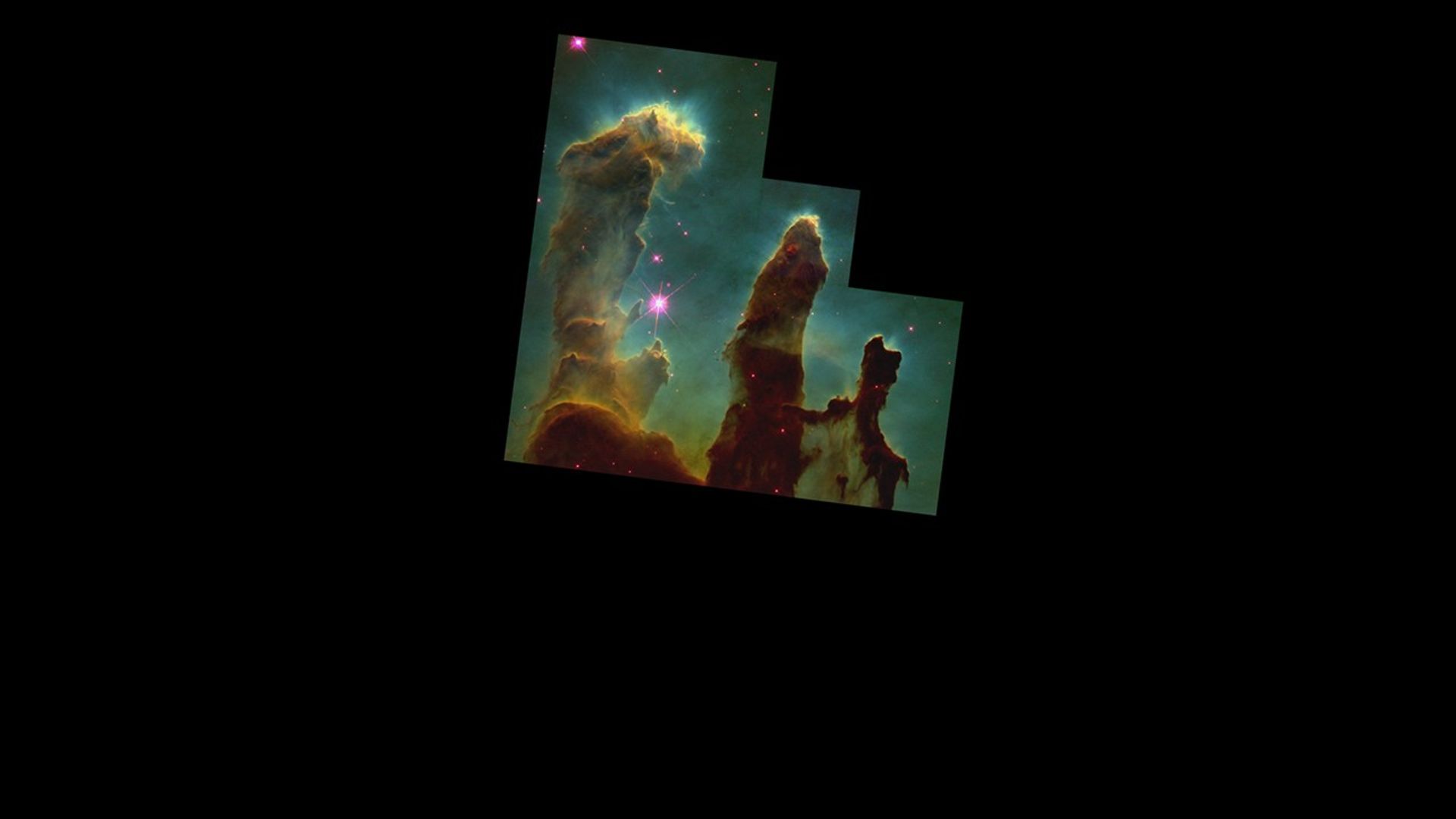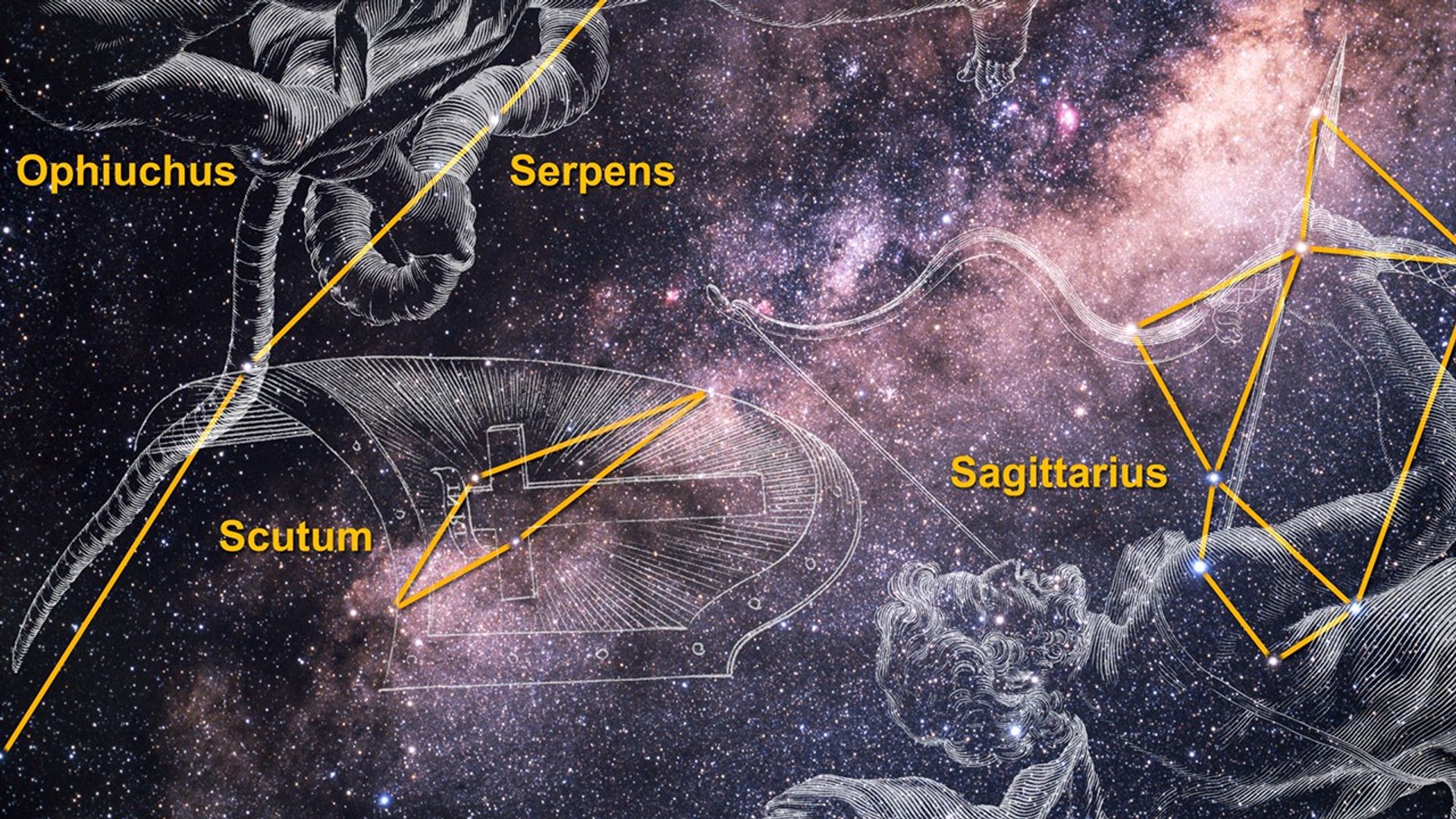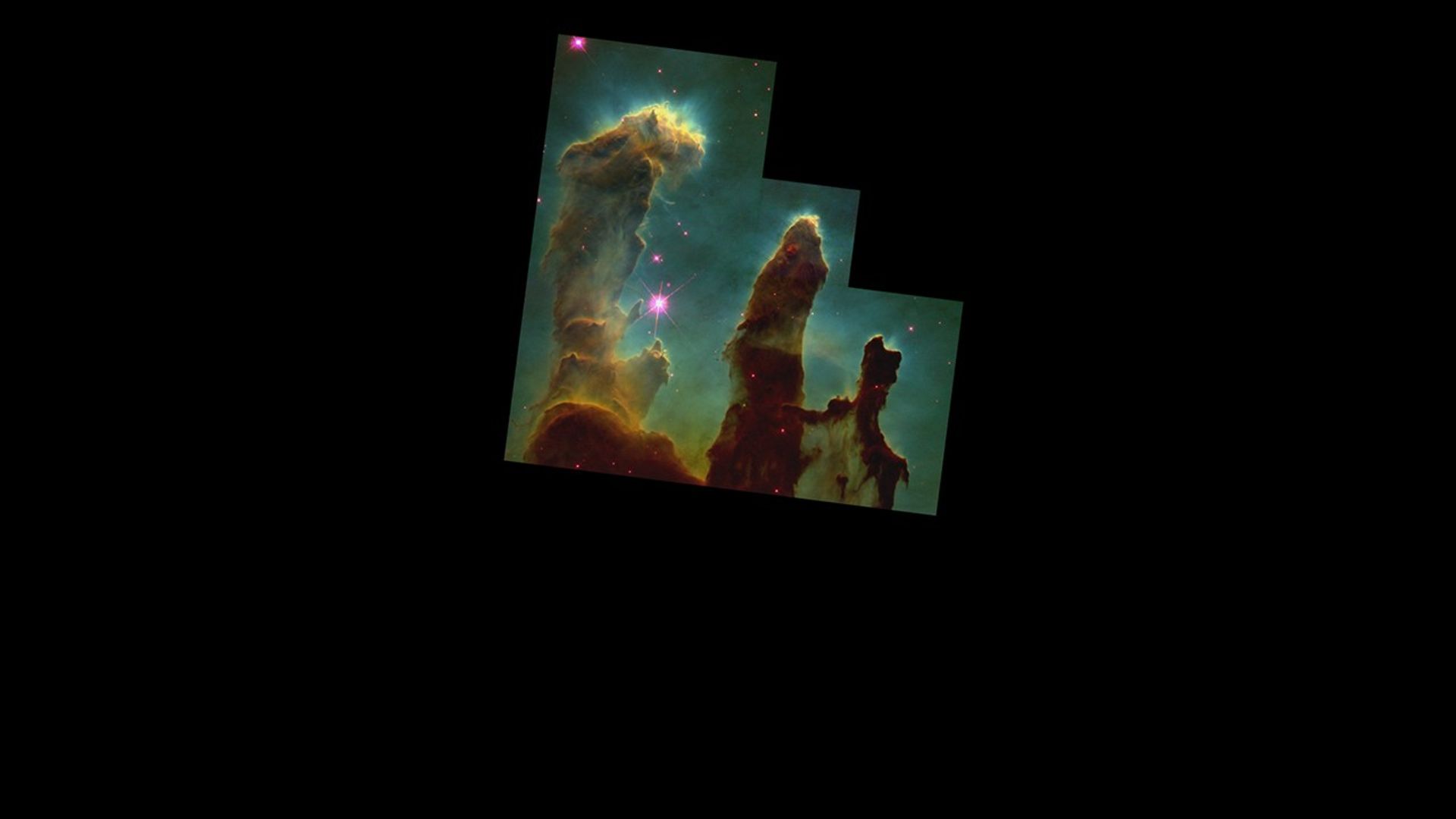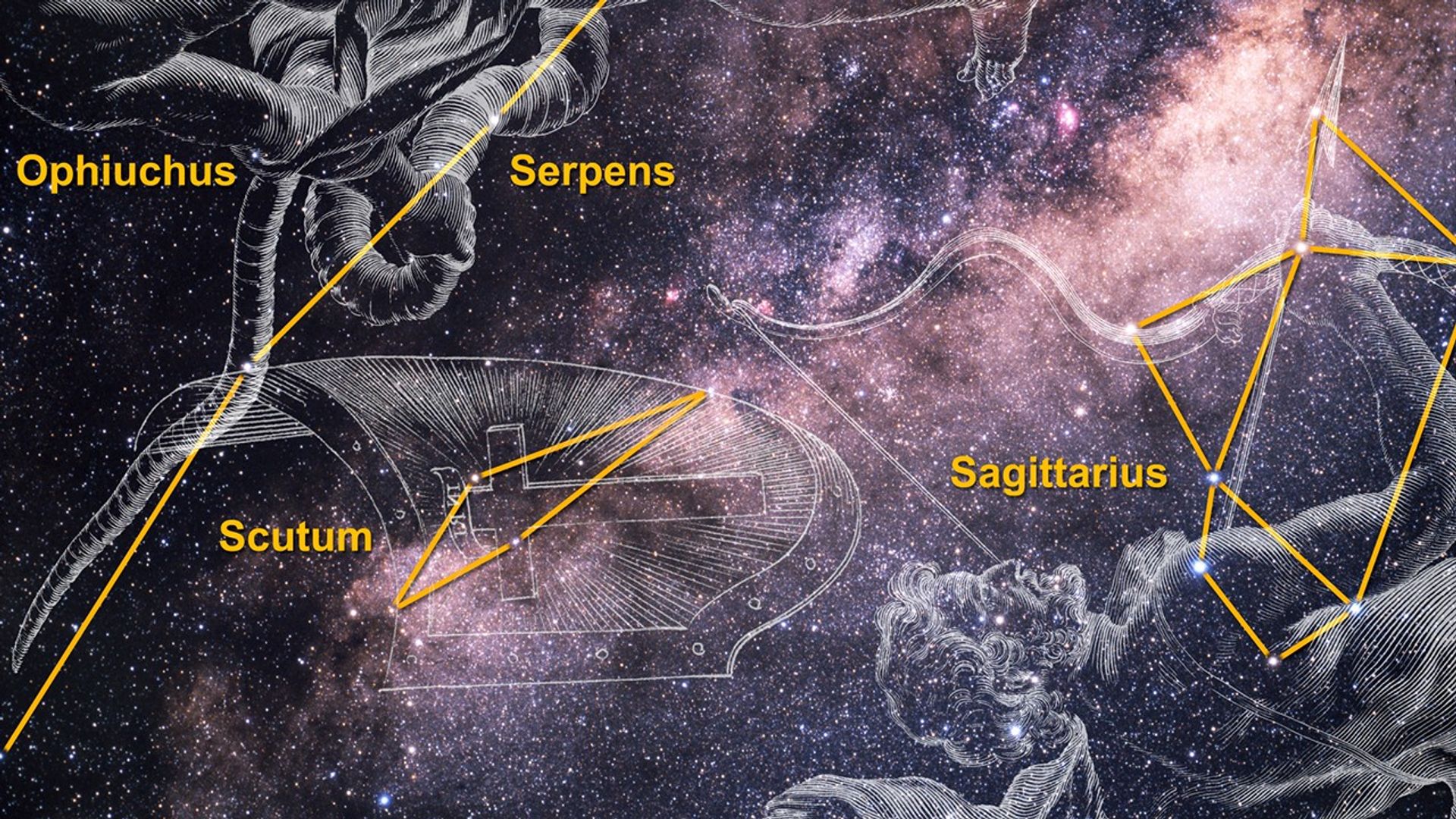1 min read
Hubble Revisits the Famous ‘Pillars of Creation’ to Celebrate 25th Anniversary
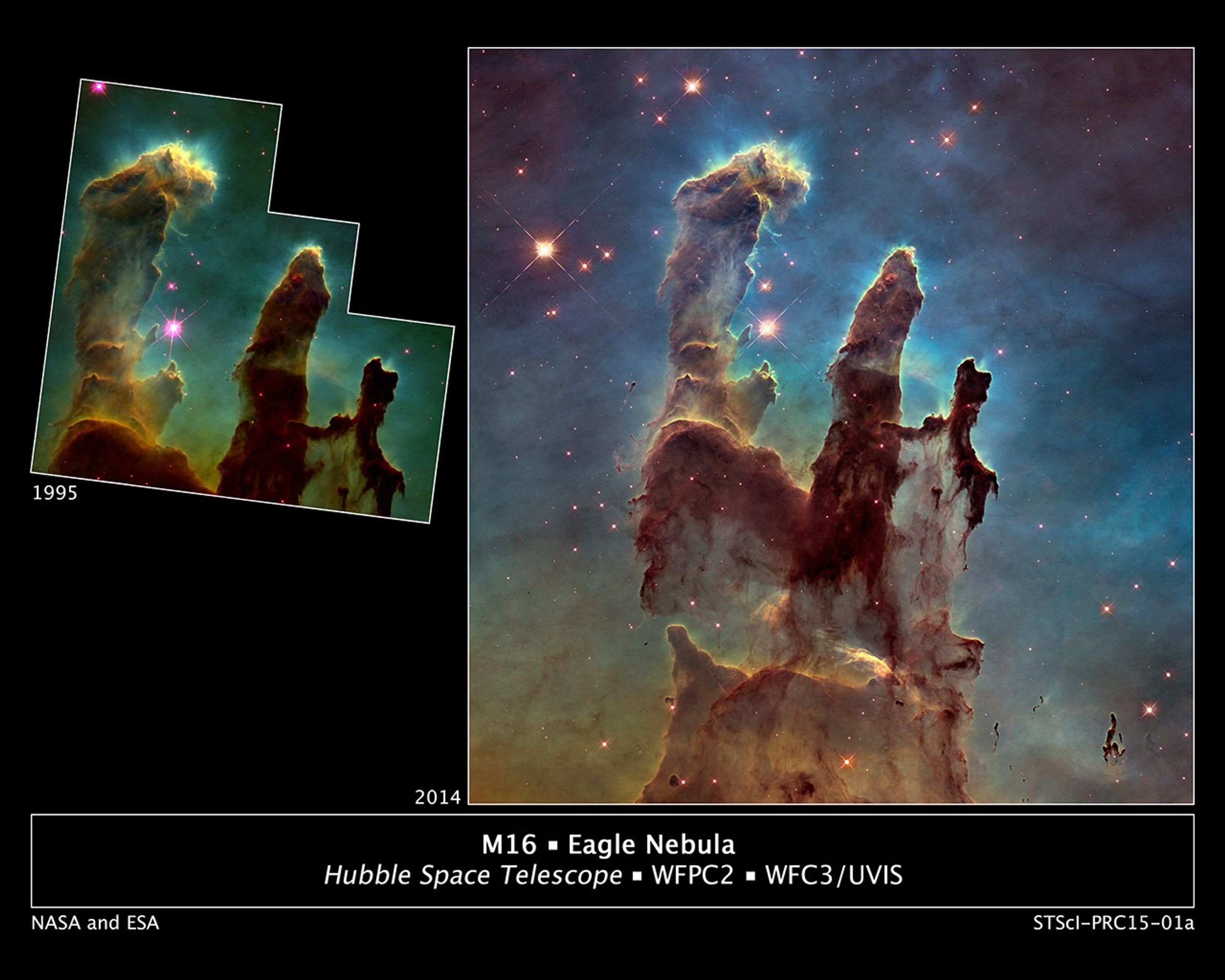
NASA's Hubble Space Telescope has taken a bigger and sharper photograph of the iconic Eagle Nebula's "Pillars of Creation," shown at right. The original 1995 Hubble image of the gaseous towers, taken with Hubble's Wide Field Planetary Camera 2, is shown at left.
Astronomers combined several Hubble exposures to assemble a wider view of the pillars, which stretch about 5 light-years high in the new image. The dark, finger-like feature at bottom right may be a smaller version of the giant pillars. The image was taken with Hubble's versatile and sharp-eyed Wide Field Camera 3.
The pillars are bathed in the blistering ultraviolet light from a grouping of young, massive stars located off the top of the image. Streamers of gas can be seen bleeding off pillars as the intense radiation heats and evaporates it into space. Denser regions of the pillars are shadowing material beneath them from the powerful radiation. Stars are being born deep inside the pillars, which are made of cold hydrogen gas laced with dust. The pillars are part of a small region of the Eagle Nebula, a vast star-forming region 6,500 light-years from Earth.
In the new image at right, oxygen emission is blue, sulfur is orange, and hydrogen and nitrogen are green.
About the Object
- R.A. PositionR.A. PositionRight ascension – analogous to longitude – is one component of an object's position.18h 18m 48.17s
- Dec. PositionDec. PositionDeclination – analogous to latitude – is one component of an object's position.-13° 48' 26.03"
- ConstellationConstellationOne of 88 recognized regions of the celestial sphere in which the object appears.Serpens
- DistanceDistanceThe physical distance from Earth to the astronomical object. Distances within our solar system are usually measured in Astronomical Units (AU). Distances between stars are usually measured in light-years. Interstellar distances can also be measured in parsecs.6,500 light-years (2,000 parsecs)
About the Data
- Data DescriptionData DescriptionProposal: A description of the observations, their scientific justification, and the links to the data available in the science archive.
Science Team: The astronomers who planned the observations and analyzed the data. "PI" refers to the Principal Investigator.Data of M16 were obtained from the HST proposal 13926, P.I. Z. Levay, J. Mack, C. Christian, L. Frattare, M. Livio, S. Meyett, M. Mutchler, and J. Sokol (STScI/AURA), and K. Noll (NASA/GSFC). - InstrumentInstrumentThe science instrument used to produce the data.HST>WFPC2 (left) and HST>WFC3/UVIS (right)
- Exposure DatesExposure DatesThe date(s) that the telescope made its observations and the total exposure time.April 1, 1995 (left) and September 2014 (right)
- FiltersFiltersThe camera filters that were used in the science observations.Right Image: F502N ([O III]), F657N (H-alpha + [N II]), and F673N ([S II])
- Object NameObject NameA name or catalog number that astronomers use to identify an astronomical object.M16, Eagle Nebula, NGC 6611
- Object DescriptionObject DescriptionThe type of astronomical object.Emission Nebula
- Release DateJanuary 5, 2015
- Science ReleaseHubble Goes High Def to Revisit the Iconic ‘Pillars of Creation’
- CreditWFPC2 image: NASA, ESA, STScI, and J. Hester and P. Scowen (Arizona State University); WFC3 image: NASA, ESA, and the Hubble Heritage Team (STScI/AURA)

Right Image: This image is a composites of separate exposures acquired by the WFC3 instrument on the Hubble Space Telescope. Several filters were used to sample broad and narrow wavelength ranges. The color results from assigning different hues (colors) to each monochromatic (grayscale) image associated with an individual filter. In this case, the assigned colors are: Blue: F502N ([O III]) Green: F657N (Hα + [N II]) Red: F673N ([S II])

Related Images & Videos

2014 Hubble WFC3/UVIS Image of M16
NASA's Hubble Space Telescope has revisited the famous Pillars of Creation, revealing a sharper and wider view of the structures in this visible-light image. Astronomers combined several Hubble exposures to assemble the wider view. The towering pillars are about 5 light-years...
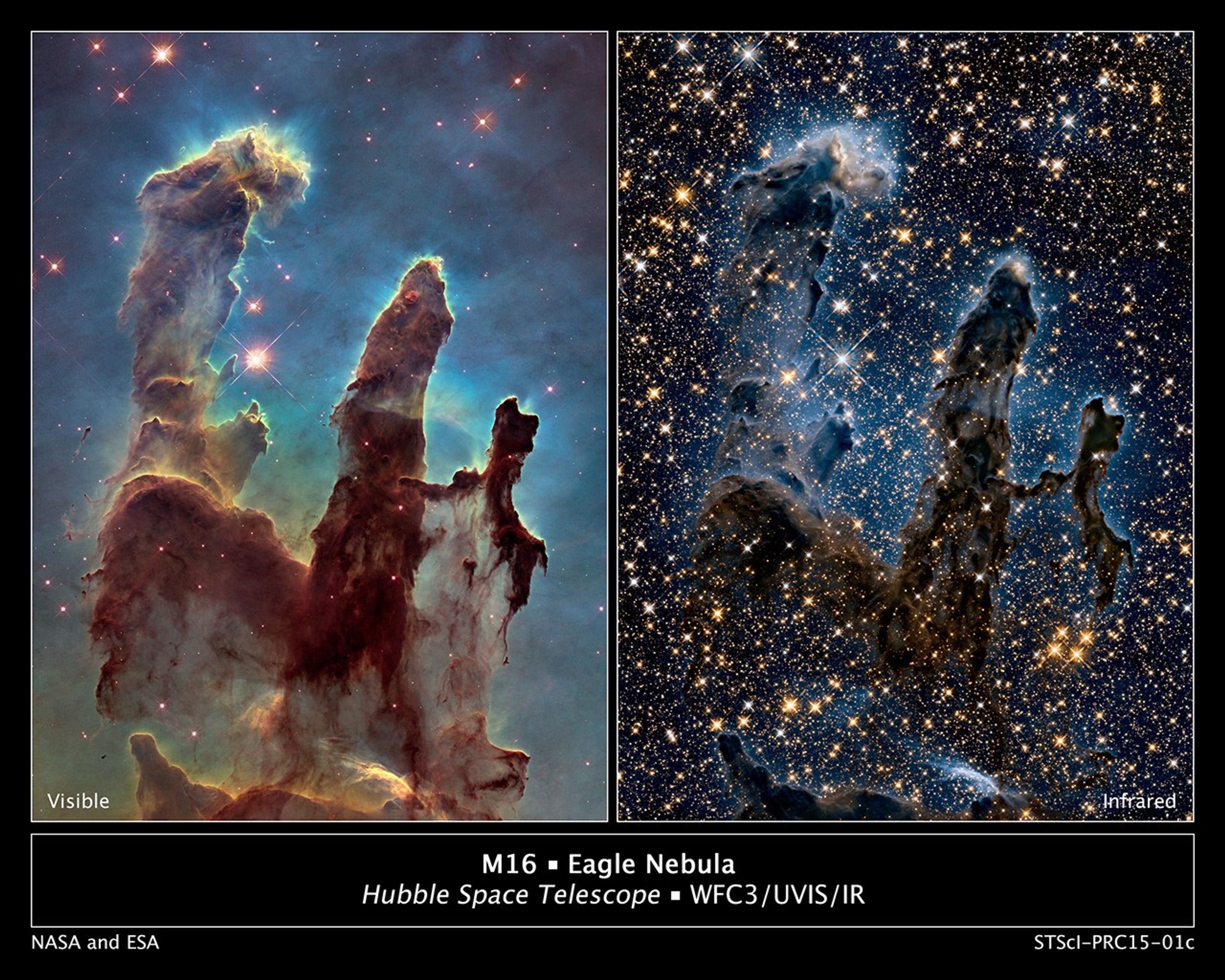
A View of the Pillars of Creation in Visible and in Near-Infrared Light
These images by NASA's Hubble Space Telescope reveal how different the iconic Pillars of Creation appear in visible and in near-infrared light. In the visible-light image at left, astronomers combined several exposures to show a wider view of the pillars and the surrounding...

2014 Hubble WFC3/UVIS Image of M16 (Cropped)
NASA's Hubble Space Telescope has revisited the famous Pillars of Creation, revealing a sharper and wider view of the structures in this visible-light image. Astronomers combined several Hubble exposures to assemble the wider view. The towering pillars about are 5 light-years...

2014 Hubble WFC3/IR Image of M16 (Cropped)
This NASA Hubble Space Telescope image, taken in near-infrared light, transforms the pillars into eerie, wispy silhouettes, which are seen against a background of myriad stars. The near-infrared light can penetrate much of the gas and dust, revealing stars behind the nebula as...

A Near-Infrared View of the Pillars of Creation
This NASA Hubble Space Telescope image, taken in near-infrared light, transforms the pillars into eerie, wispy silhouettes, which are seen against a background of myriad stars. The near-infrared light can penetrate much of the gas and dust, revealing stars behind the nebula as...
Share
Details
Claire Andreoli
NASA’s Goddard Space Flight Center
Greenbelt, Maryland
claire.andreoli@nasa.gov





